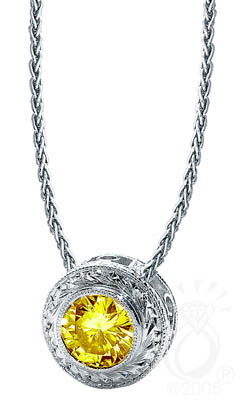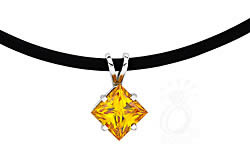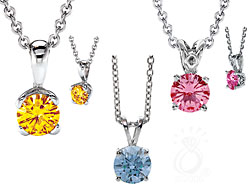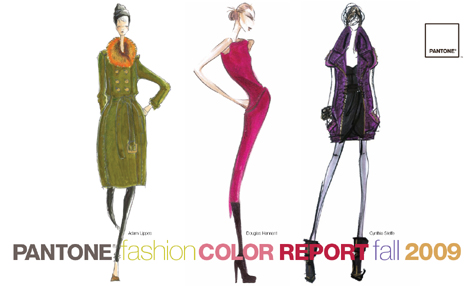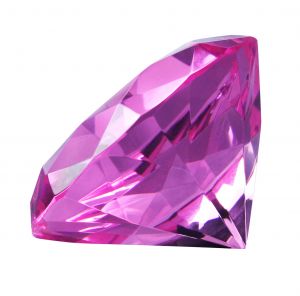Colored Diamonds
-
-
Fall Fashion Trends and Matching Jewelry
Camel.
No. Not this one:
This one:
According to The Los Angeles Time fashion section:
COLOR ME CAMEL
If there was any doubt that camel is the color of the fall season, it was cleared up by designer Hannah MacGibbon. Her Chloe collection was a study in the classic hue and every other shade of beige, from caramel to bark to bisque.
Camel is a fresh alternative to black, reflecting fashion’s renewed interest in classic American-style sportswear, a trend that we saw on the runways in New York at Michael Kors, Marc Jacobs and Derek Lam, and in Milan at Gucci and Max Mara.
In Paris, nearly every designer had a camel coat on the runway. Chloe’s MacGibbon showed sturdy man-tailored camel’s hair coats alongside sleek high-waist trousers, dotted bow-front blouses or chambray shirts, and cowboy boots.
At Stella McCartney, the camel coat was sportier, more akin to an anorak. At Hermes, it was cut close to the body with a smart black leather collar. Lanvin’s camel coat had sculpted power shoulders.
Hussein Chalayan showed a camel’s hair poncho. And at Martin Margiela, camel came in the form of a classic turtleneck sweater, paired with a crimson red coat — a color combination that’s definitely worth trying on at home.
As for the perfect jewelry acompaniment, we think Gemesis is a real standout and a natural pairing against the rich, lush texture and color of camel.
Here’s a perfect suggestion:
Style 9026GM
Filigree Diamond Pendant
Hand engraved pendant with hand applied scrolls and a 3/4ct Gemesis cultured diamond with fancy yellow or orange color on an 18″ wheat chain. Pendant measures approx. 8mm in diameter.
Available Metal: 18kt White Gold and Platinum
-
Color Enhancement of Natural Diamonds
You may or may not know that diamonds come in all of the colors of the rainbow, from reds and pinks to blues, greens and yellows. However, not all fancy colored diamonds get their color naturally. Below is an article explaining the color enhancement processes of natural diamonds.
COLOR ENHANCEMENT OF NATURAL DIAMONDS
TREATMENT OF DIAMONDS TO CHANGE THEIR COLOR HAS BEEN AROUND SINCE 1940’S. INITIALLY IT WAS DONE BY EXPOSING THEM TO RADIATION FOLLOWED BY HEAT TREATMENT (ANNEALING). THIS PROCESS IS SIMILAR TO SANITIZING FOOD PRODUCTS. THE RESULTING DIAMONDS ARE FREE OF RADIATION AND SAFE TO USE. THIS TREATMENT PRODUCES COLORS OF BLUE, YELLOW, GREEN, AND VERY RARELY PINKS AND REDS. WHILE THESE COLORS ARE PERMANENT, INDUSTRY TEST SUGGEST CAUTION BE USED FOR EXPOSURE TO TEMPERATURE ABOVE 300-400 C.
Since the 1990’s, the color of diamonds has also been altered by HPHT process (High Pressure High Temperature). Polished or rough diamonds (natural and synthetic) are processed in the lab under very high pressures and temperatures, mimicking conditions deep in the earth where diamonds are formed. Depending on the composition of the diamond the results could be colorless as well as yellow, green, orange, and very rarely pink and blue. Colors produced by HPHT are permanent and they have the same features as a regular natural diamond.
There are other methods of diamond treatment such as PVD (pressurized vapor deposit), a color coating scheme, and clarity enhancements such as lasering, [fracture filling] treating, or filling. Color treatment can be done on any synthetic or [natural/minded] diamond. In the US these processes are done under strict and safe conditions. Article written by Cendico Diamond -
A Ring to Behold – Do it with Gemesis!
We just had to show you a picture of this beauty. It was a recent winner at the recent JCK Las Vegas 2010.
According to one of JCK’s correspondents:
The 60+ Carat Yellow
Sure, there were plenty of diamonds strewn around the Venetian, but only one reached jawbreaker proportions. Amir Goldfiner, owner of Rahaminov Diamonds in Los Angeles, proudly presented his diamond—a radiant-cut, 60-plus ct. fancy vivid yellow—for the first time at JCK Las Vegas.
“A stone like that is crazy,” he says.
The rough responsible for the rock weighed several hundred carats; one of Goldfiner’s cutters spent nearly a year whittling down the original mass to its current size and shape. (The stone is now set in an 18k gold ring.)
Yet Goldfiner is reluctant to divulge much else, like grade or exact weight.
“I want to maintain the mystique,” he tells JCK, alluding to a possible auction sale. “There are very few stones like it in the world.”
And the price for that kind of ice? If you have to ask… —Jennifer Heebner
We’re here to tell you that a piece like this can be yours – and no, you don’t have to be drippingly wealthy. Gemesis is a magnificent fancy colored gem that will knock your socks off. Consider a piece like this for our upcoming custom design contest (details soon!)
-
Buying Colored Gemstones – The Basics
Style 8963GM
Princess Cut Cultured Diamond Solitaire Pendant
1/3ct Princess cut solitaire diamond pendant set diagonaly, hanging from a black rubber cord. Available in fancy yellow, orange, pink and blue cultured diamonds.
Metal: 14kt White Gold
Stone size: 1/3ctColored gemstones like Gemesis can add real pizazz to your wardrobe. They are eye-catching and often, more affordable than diamonds. But just as buying diamonds requires some basic knowledge, so does the purchase of colored gemstones. Here’s a few pointers from the Better Business Bureau:
Many new stone treatments have been developed to improve the appearance and durability of gemstones. However, a treatment may lower the gem’s value and may require special care to retain the gem’s appearance.
Laboratory-created (synthetic) stones are identical to natural stones but do not have their rarity and cost; thus, laboratory-created stones are less expensive than naturally mined stones.
In contrast, imitation or “assembled” stones resemble natural stones in appearance, but may be glass, plastic or other less valuable stones.
Follow these tips:
- Ask whether the gemstone is natural, synthetic or imitation.
- Ask whether the gemstone was treated in any way.
- Learn to use a jeweler’s loupe (small magnifier) to see inside the stone to check if it is chipped or damaged in any way; ask the salesperson to educate you about the quality of the gemstone.
- Be sure you get everything in writing. A sales receipt or appraisal listing the quality of the gemstone is considered a contract and is your only means of proving what you have been told.
- Read all warranties and guarantees before buying the jewelry.
- Ask for a certificate of replacement cost or appraisal listing the special qualities of your gemstone to accompany your receipt.
- Ask about the cleaning and care of the gemstone.
Learning how to use a jeweler’s loupe is a great suggestion. We’re more than happy to show you how. Stop by our showroom in Scottsdale, Arizona. We’d love to show you around.
(above) Jewelry professionals use a magnifier, also called a loupe (pronounced loop), to inspect gemstones and other jewelry.
-
Fancy Colored Diamonds & Personal Style
“With colored diamonds, it’s not about what’s beautiful to everyone else. It’s about what speaks to me and my personal sense of style.”
That’s what Randi Molofsky has to say, the author of “A Girl’s Guide to Buying Diamonds: How to Choose, Evaluate, and Buy the Diamond You Want.”
According the New York Times article:
Brown diamonds, better known by their more effervescent name, champagnes, were first offered to the trade in the early 1990s after a big discovery at the Argyle mine in Western Australia. Since they are small, marked with internal flaws and plentiful, they had only been used for industrial purposes. Retailers, the gatekeepers of the jewelry industry, disdained them.Years of training by the Gemological Institute of America had instilled in retailers the notion “that white was better,” said Elizabeth L. Chatelain, president of MVI Marketing, based in Paso Robles, California, which helped Argyle introduce champagne diamonds to the American market. “To retailers, these were off-color goods.”
Consigned to mass merchants, who sold them on the cheap, browns languished in the low-end market until the turn of the millennium, when opinions began to change and designers warmed to the idea of jewelry with the refractive brilliance of a diamond and the singular palette of a colored stone.
There was a bonus: At prices 15 percent to 25 percent lower than their white counterparts, champagnes were a bargain.
“It gave designers a way to do quite exuberant and elaborate diamond designs at a lower cost,” said Sally C. Morrison, director of the Diamond Information Center. “There are so many shades to create nuance and texture using browns. It’s a way to paint in color.”
What we can note from this article is that colored diamonds are seeing a well-deserved resurgence. They are affordable and reflect a personal style, plus the variations on what to do with a fancy-colored gem are endless.
“It’s been an interesting journey,” Mr. Le Vian said. “We’ve taken stones considered low quality and made them attractive to consumers.”
Take a look at our Gemesis page for some of our best and brightest:
Style GM1006
Yellow Cushion Cut Gemesis Ring With Pave’ White Diamonds
1.38ct deep fancy yellow cushion cut Gemesis diamond of VS clarity set into 18kt white gold single shank mounting accentuated with approximately .90ct t.w. round brilliant cut pave’ set diamonds.
Metal: 18kt White Gold
Stone Size: .84ct
Ring Size: 5 – 8 -
A Glimpse into Spring’s Closet
(above) Cultured Diamond Pendant
Yes, it’s a long way off. But it’s alright to take a little peak! As our economy slowly, slowly picks back up, we see hints of that same optimism in the fashion trends for this Spring.
American designers showing their Spring 2010 collections at Mercedes Benz Fashion Week in New York this fall have responded to the shift in the economy by using bold colors in comforting, familiar silhouettes, or creating eye-catching one-of-a-kind pieces that are completely irresistible.
Key design directions include the layering of sheer fabrics, more distinct color blocking, cut outs and splicing of angular panels, asymmetrical lines, acid wash, and mixing textures and patterns in a fresh patchwork. Dresses, tops and jackets pay homage to the back, promoting a “look as good going as coming” attitude—with some designers spinning two diverse looks front and back.
“But the fashion constant has been and always will be color,” hails Nina Garcia, fashion director Marie Claire and Lifetime’s “Project Runway” judge. “There’s nothing like a vibrant hue of royal purple or golden yellow to make us feel optimistic and hopeful for the future.”
Color is one of the most essential elements each season as it triggers the emotional ‘buy me’ reaction. But now more than ever, women are vigilant in their spending. “Instead of reinventing their wardrobe each season, consumers want pieces to complement what they own,” tells Leatrice Eiseman, executive director Pantone Color Institute. “Pairing a bold color with a basic piece or freshening up a look with bright accents addresses the needs for practicality and fun.”
Source: AGTA
Luckily, we’re right on track, when it comes to color and affordability. Our Gemesis cultured diamond pieces are eye-catching and warming to any wardrobe. Wear a little positivity today….you deserve it!
-
Color, Jewelry, Economy
The release of the PANTONE Fashion Color Report coincides with the beginning of New York Fashion Week.
“Now more than ever, women are vigilant when it comes to spending,” said Leatrice Eiseman, executive director of the Pantone Color Institute.
“Instead of reinventing their wardrobe at the start of each season, consumers want pieces to complement what they already own. Pairing a bold color with a basic piece or freshening up their look with bright accents addresses the need for practicality, as well as fun.”
Yellow has made its mark on fashion and spring will further this trend with gleaming Aurora. Reminiscent of the first glimpse of yellow as the sun begins to rise over the horizon, this shimmering, slightly greenish yellow adds a bold infusion. Energy continues to surge throughout the warmer hues, leading to provocative Fusion Coral. This inviting orange connects directly to tangy Tomato Puree, this season’s classic red. Pair it with Turquoise for a retro look.
When it comes to yellow, nothing is better than the complex and rich yellows of Gemesis, covering just about every shade under the sun. Not only is Gemesis is fashionable with its varied yellows, but costwise, you can have your cake and eat it too!
Style 9026GM
Filigree Diamond Pendant
Hand engraved pendant with hand applied scrolls and a 3/4ct Gemesis cultured diamond with fancy yellow or orange color on an 18″ wheat chain. Pendant measures approx. 8mm in diameter.
Available Metal: 18kt White Gold and Platinum
Available Stone Size: 3/4ct -
Warming your Metals for Winter
Fall 2009 jewelry trend experts predict a “warming” trend that has nothing to do with our climate problems. Metals like silver will take a back seat to warmer toned metals like gold, brass, and bronze.
Jewel tones, like amethyst, will be seen on more skin as well. According to one necklace expert:
Deep, warm, regal hues dominate both clothing and accessories. Think of colors that look especially elegant in velvet . . . dark amethyst, royal blue, camel, burnt orange, ruby red, and eclectic greens from hunter to olive.
Most of these colors can work together or alone, so experiment with mixing and matching. In addition to jewel tones, jewelry trends have embraced clear crystals and even natural elements like wood (crossing over from last summer’s hottest styles).
Nothing says “warm jewelry” like our regal Gemesis gems, which add a rich and unique look to any wardrobe.
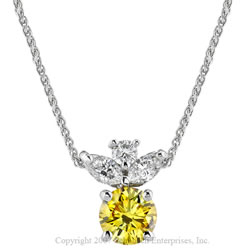
Style GM1000
Yellow Gemesis Pendant With Round And Marquee White Diamonds
.93ct deep fancy yellow round brilliant Gemesis diamond of I clarity accented by 1/3ct t.w. of marquee and round white diamonds, set into an 18kt white gold pendant on an 18″ cable chain.
Metal: 18kt White Gold
Stone Size: .93ct -
Fancy Colored Diamonds – A Quick Lesson
Ever since J Lo’s engagement ring, there has been a movement toward fancy colored diamonds. What is it about these magical, richly hued gemstones that capture the hearts of the buyer? And how are they created?
For quite some time, any color found in a diamond was considered undesirable. Diamonds were meant to be clean and clear – devoid of any color or even the slightest hue.
But now that fancy colored diamonds have become popular, gemologists are purposefully creating diamonds in a wide array of colors.
Naturally, diamonds can have color due to the following factors:
- Trace elements in the diamonds can produce color such as nitrogen which creates a yellow diamond.
- Color can result when radiation is present during a diamond’s creation. For instance, green diamond hues are the result of radiation.
- Inclusions are undesirable in a colorless stone, but can contribute unique tones and flashes of color in a fancy color diamond.
More commonly, fancy color diamonds are treated in one form or the other. Synthetic colored diamonds are affordable and often very vibrant in hue. They are created in a laboratory but are still the “real deal.” With that said, you’ll want to do your research and find a company that creates a solid, authentic product (like Gemesis, for instance.)



